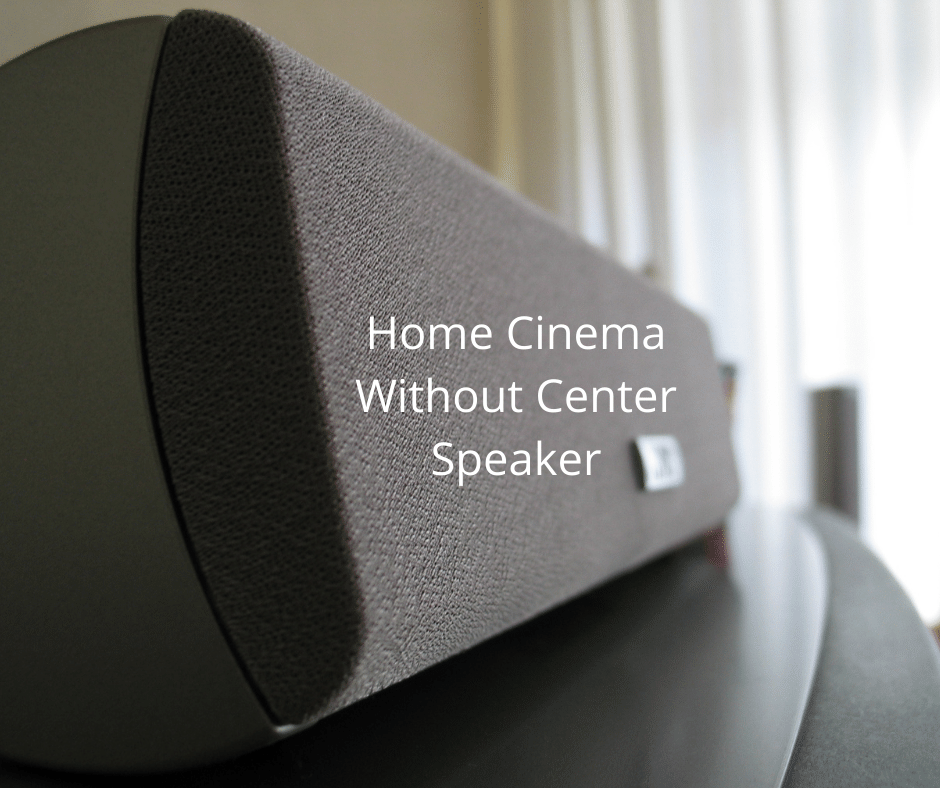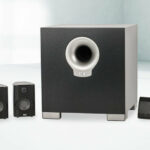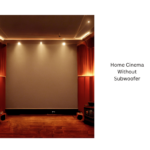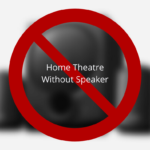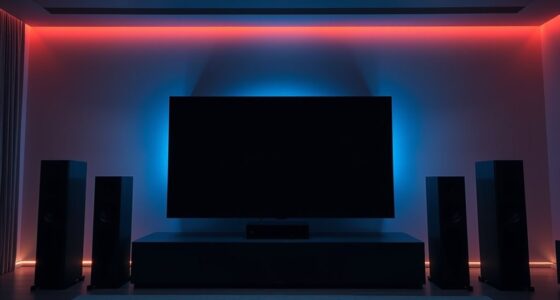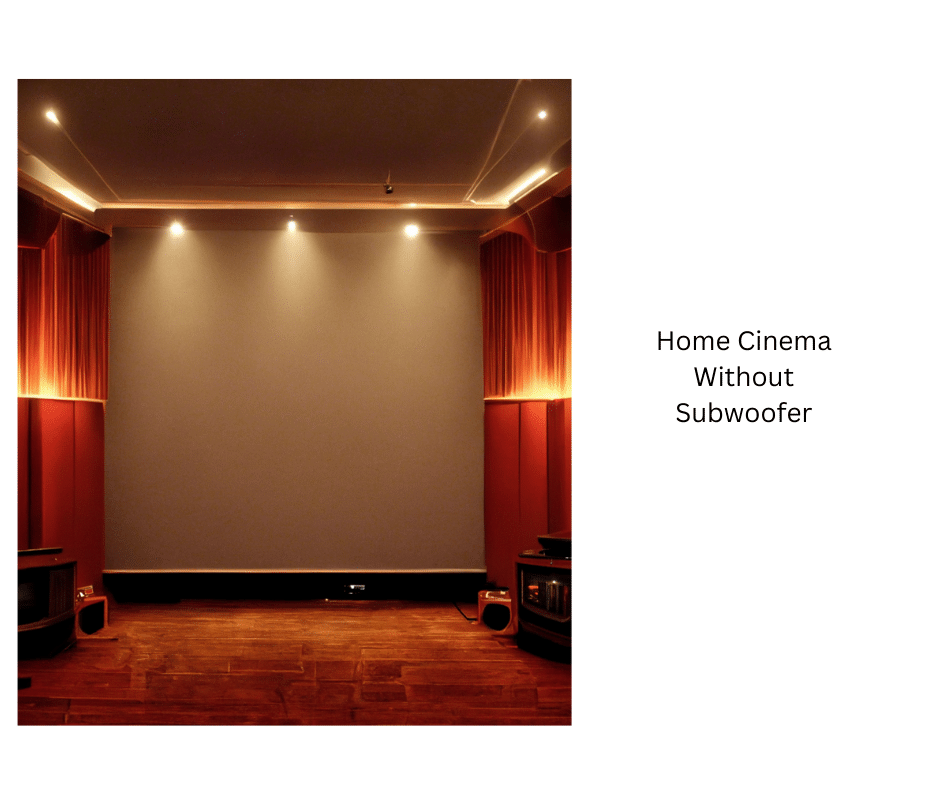If you prefer not to purchase a center speaker, there are other options available. You can explore 2.1 systems as an alternative. If you’re concerned about not having a center channel, consider setting up a 4.1 system. Another solution is to place your center speaker on a short stand in front of the screen and angle it upwards using spacers. This adjustment can help achieve a more balanced sound for your speakers.
Surround Sound System without A Center Channel Speaker
A typical surround sound system has a five-speaker setup and a subwoofer. There is also a center channel speaker. These speakers contain the core sounds of the audio files, such as dialogue and lyrics. Unlike other speakers, which are oriented to the sides of the room, the center channel speaker is entirely focused on the center. It is thus essential to have a center speaker for proper sound quality.
An accurate surround sound system comprises five channels: front L/R speakers, two surround L/R speakers and a dedicated center channel speaker. In a conventional setup, the center channel speaker is placed below the television or the projector screen to enhance the listening experience. This allows listeners to move about the room while hearing dialogue from the center. The home theater receiver can be programmed to alert you when the center channel speaker is missing.
A center channel speaker is not required for every surround sound setup, but it is useful if you use the same speakers as the front speakers. A good center channel speaker will be capable of covering the entire range of audio that human ears can detect. In addition, a good center channel speaker usually has three types of speaker drivers. One full-range driver will do the job if you have a small setup.
A center channel speaker is used for dialogue, although it may also be used to reproduce music. The center channel speaker’s frequency response must match the front speakers’ frequency range. If you’re unsatisfied with your current speaker setup, you can remove the center channel speaker. Alternatively, you can change the speaker layout in the AV receiver settings menu. If you remove the center channel speaker, the audio will be downmixed to 4.1 and played through the front stereo speakers.
Some people use a 2.1 system, but you can also have a 4.1 system with a center speaker. However, this setup has several drawbacks, such as no control over the center channel volume. You may have to purchase a center channel speaker separately from the other speakers. If you cannot afford a center speaker, you can place it on a low stand near the screen. Alternatively, you can use spacers to tilt it upward.
If you cannot afford a center channel speaker, you can still enjoy the surround sound experience with a 5.1 system. All you need to do is tell the receiver or processor that you do not have a center channel speaker and it will send information to the left and right main channels and the center channel. This will ensure the best sound quality. And if you can’t afford the center channel speaker, you can buy a cheaper one.
Do You Need a Center Channel Speaker?
When choosing a center channel speaker for your home cinema setup, you must first consider the type of sound you want. You want the sound to be balanced and rich, while at the same time sounding natural. You will also need a center channel compatible with your receiver and amplifier. This means it can easily connect to your existing home theater equipment with standard speaker wires. The best center channel speakers will not only sound good, but they should also work harmoniously with your other speakers. While Klipsch speakers are very popular for their rich, bassy sound, they will also sound out of place if you are trying to use your center channel speaker with different equipment.
A center channel speaker should be placed close to your listening position, preferably below the screen. The drivers of this type of speaker should be as close to the screen as possible, but there should also be a good amount of space behind the back of the speaker so that it can deliver bass and trebles without distortion. It should also be placed on a sturdy surface like a table or floor to provide its full potential. If you aren’t sure where to place your center channel speaker, you can purchase a dedicated center speaker stand.
Before you buy a center channel speaker, you will want to consider what size you want for your surround sound—generally, the bigger the driver, the better the sound quality. The size of the tweeter is also an important factor. The tweeter will help bring the high frequencies into the room. You will also want a wide frequency response for your center channel speaker. It is important to note that you should choose the center channel speaker that best matches your home theater setup.
The center channel speaker is one of the most important parts of a surround sound system. It helps to bring the dialogue into the center of the room. It helps make dialogue sound natural and accurate and gives your home theater a more realistic sound. You can also use your center channel speaker to create a more realistic experience by playing music, sound effects, and dialogue from the screen.
A good center channel speaker will help bring out the sound of movie dialogue and the most of the movie’s music. The center channel speaker is also important for side-to-side pans, and to isolate vocals and volume. However, it is not the most important speaker in your home cinema setup. A high-quality center channel speaker will help make sure that all of the primary content is delivered to your audience.
Alternatives to A Center Channel Speaker
A center channel speaker is an essential part of a home cinema system. It helps the audio in the center of the room sound more realistic. Although regular bookshelf speakers are good options for the center channel, dedicated center channel speakers offer some crucial benefits. In addition to providing a more realistic sound field, a center channel speaker is easier to conceal and maintain an even acoustic. Read on to discover the advantages of dedicated center channel speakers.
Center channel speakers come with various features that make them a better choice for home cinema. For example, they can have different sizes of drivers, making them more effective for better sound. Larger drivers, typically 6 inches or more, will deliver better audio quality. Smaller drivers are not as effective at reproducing high-frequency sounds. Similarly, a center channel speaker should be able to provide wide frequency response.
A center channel speaker is a critical part of a home cinema system. It is responsible for the balance of audio between the left and right channels and provides a specific anchor point for dialogue and other sounds. It also bridges the gap between the left and right stereo speakers and provides detailed spatial acoustics. Most modern home cinema systems use a 5.1-channel audio format, which requires a center channel speaker to handle 70 percent of the key audio presentation. A center channel speaker bridges the gap between the left and right channels, ensuring sound pans smoothly.
Carl is the author of 1home Theatre Projector. When he’s not busy writing about all things projector-related, you can find him playing basketball or watching a good movie. He knows that jumping to a projector-based home cinema can be daunting, but he’s here to help make it as easy as possible. With his comprehensive guides and product reviews, you’ll be able to find the right projector for your needs and set it up in no time. Plus, he’s always on top of the latest news and information on upcoming releases, so you’ll always be ahead of the curve.
